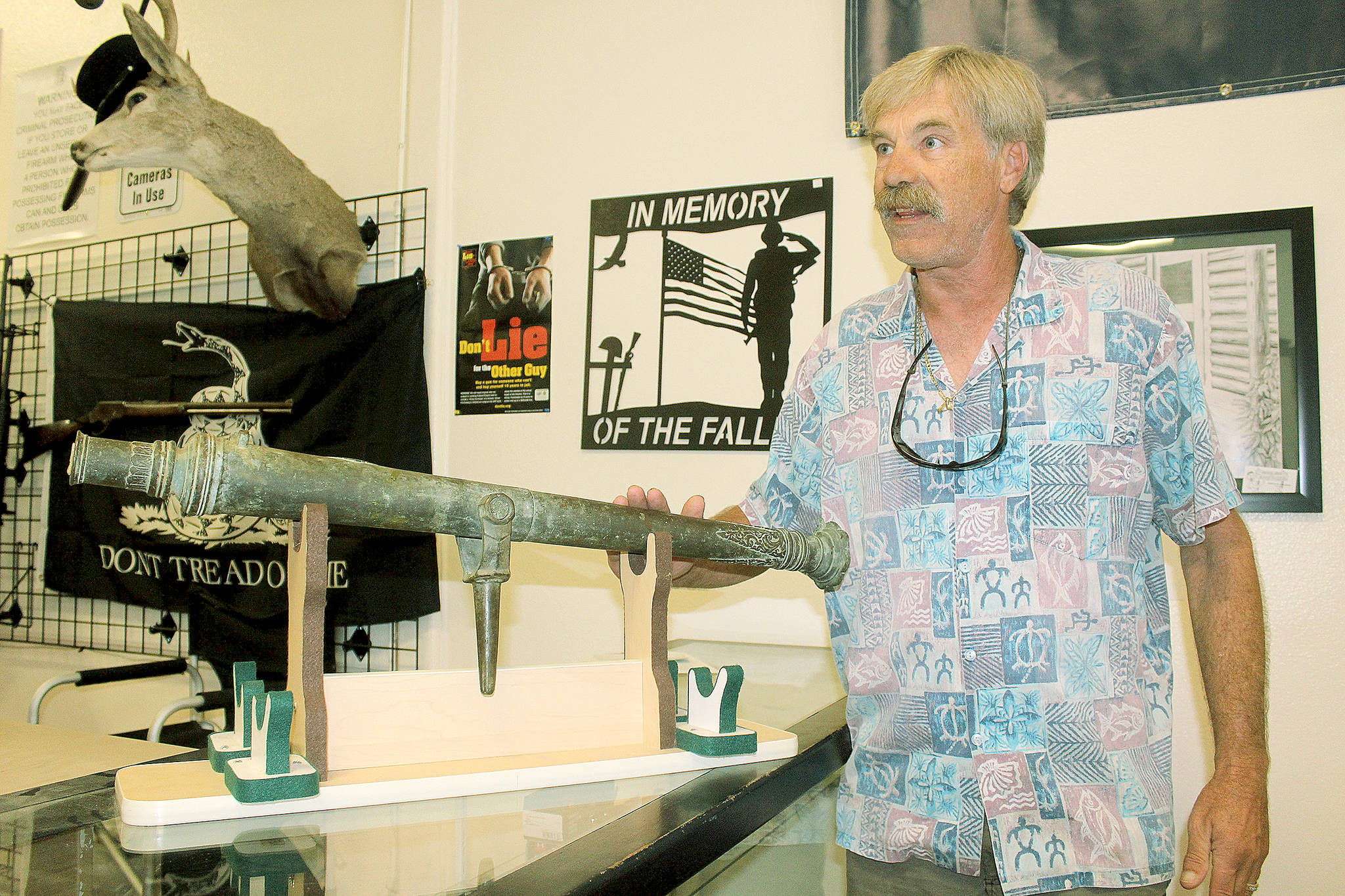One type of weapon a customer might not expect to find when browsing at the Whidbey Arms gun shop in Langley is an ancient cast-bronze cannon dating back to the 17th century. But that’s exactly what cropped up over at Ken’s Corner in recent weeks.
Well-known Whidbey “picker” John Norris has a keen eye for treasure, and this time his scavenging instincts paid off with a Freeland storage locker full of invaluable items.
Leading the loot haul this time around is the Southeast Asian swivel cannon, also known as a rail gun or a lantaka, which was common from the 1600s through the early 1860s in countries such as Malaysia, the Philippines and Indonesia. They were mounted on warships and merchant vessels, serving as a deterrent for would-be attackers, such as the legendary pillaging pirates.
Craig Justus, manager of Whidbey Arms, explains that the weapons were extremely sought after in that time period, each bearing almost identical engraving patterns and embellishments. They were mounted on the top of ships, but some, including this one, were portable enough to carry from side to side during an attack. They could be mounted onto swivels or crammed into reinforced rail sockets for firing away in the knick of time.
The one on display at Whidbey Arms weighs roughly 90 pounds, but some with the same design and time period could weigh well over 1,000 pounds.
During his research on the cannon, Justus spoke with experts at the Cody Firearms Museum in Wyoming, which recently featured the large version of this very cannon, which weighs about 900 pounds. Estimates of the one on display in Langley indicate a value of $4,000 to $6,000, primarily due to its solid condition, according to Justus.
“The patina on it is intact,” Justus said. “It hasn’t been restored at all, and you can still see the burn marks from the gun powder. It has some battle scarring on the front and some flash burns.”
The firearms crew at Whidbey Arms went through the cannon with a long, skinny camera to verify that it’s still solid and in excellent condition. It’s missing a cap, which would come standard in the form of a bamboo stick with a brass or bronze cap on the end that flipped over the opening, Justus explained. Since bamboo expands on impact, it would be sealed in by the blast.
As if the ancient cannon with a storied past isn’t intriguing enough, the storage locker discovered by Norris also contained a pair of samurai warrior stirrups from the 1500s to 1600s, he said. The shop armorer at Whidbey Arms, military veteran Sherman “Smitty” Smith, points out the intricate scrollwork and decorative engravings on the stirrups, which is a trademark of Japanese craftsmanship.
After extensive research, Smith found that the stirrups allowed the mounted samurai warriors to control a horse while also firing a weapon and brandishing a sword. The Asian Art Museum in San Francisco states that the samurai stirrups were typically made from iron with silver inlays and floral motifs, typically indicating a high samurai ranking and the owner’s privileged position.
Some feel that the treasures belong in a museum or with a serious collector, and the mystery of how they ended up in an abandoned storage locker may never be solved. But until someone plops down a few thousand dollars to add the cannon to their own collection, anyone can stop by Whidbey Arms at Ken’s Corner and get a rare glimpse of seafaring history from far-flung corners of the world.
While there, check out the other antiques and interesting collectibles such as an 1881 Marlin rifle mounted on a wall behind the counter.



